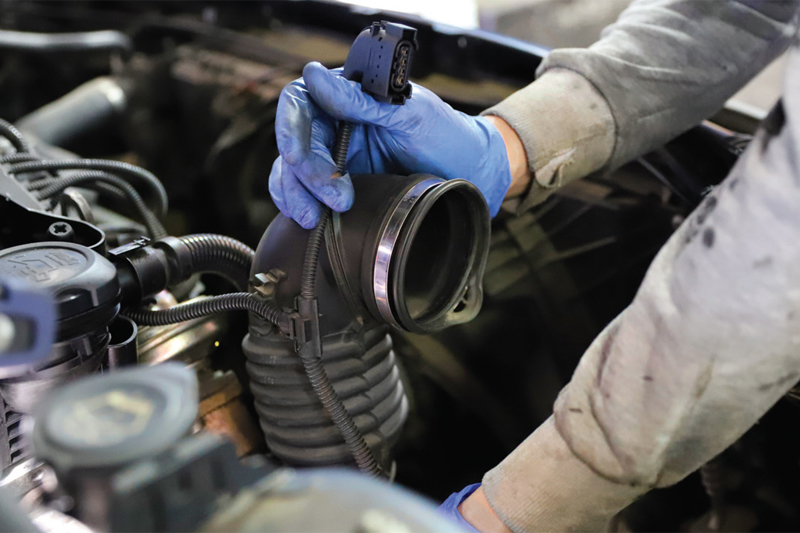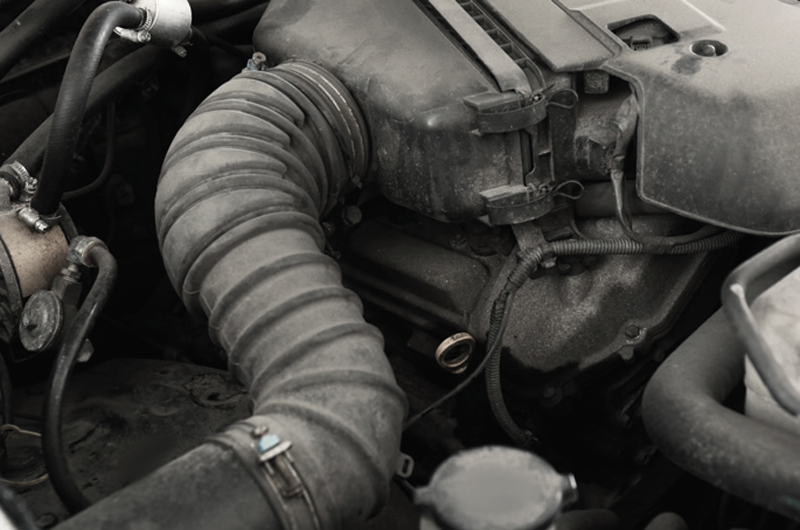
Nissens talks through the symptoms of air leaks in a turbo and turbocharged system and presents an example problem and solution to solving this issue.
- Significant decrease of engine power
- Lack of momentary engine response – longer turbo lag than usually
- Black smoke from exhaust
- Whistling noise from the engine compartment
- Abnormal noises from the engine
- Increased fuel consumption
- Severe mechanical turbo failures, mainly due to overspeeding (collapsing compressor wheel, broken shaft, etc.)
- Engine sets in limp mode, underboost errors registered (e.g. P0299, P2263)
Diagnostics tips
Control the system boost level – Measure the boost level generated during the full engine load. Compare the data with the vehicle documentation. Lack of proper boost may relate to leakages. Boost pressure can be measured by means of a pressure gauge or if possible, by on-board diagnostics and live data of the boost.
Perform a holistic diagnosis of the charge system – Proper operation of the charge system relies on various components. Underboost errors may also have other causes than leaks. Potential factors related to underboost errors:
- Air channel inner restrictions
- Turbocharger failures (waste-gate valve failures or vanes failures)
- Faulty metering devices – boost pressure, MAP, MAF, back-pressure, IPC sensors
- Turbocharger control device failures – actuators, boost controllers
- EGR system faults
Incorrect system operating pressures
A pressure test of the charge air system is an effective and inexpensive method for locating leaks. Make your own test kit or choose a kit option available for the automotive market. The pressure testing method involves capping air ducts and filling the charge system with air. A cap must tightly seal one side of the tested circuit. At the other side, a cap including air valve, to introduce the test air, must be sealed. When the pressure inside builds up, it is very easy to spot leakages.

- Depending on the vehicle model and system layout, you can either test the entire duct system, starting from air filter box throughout the turbo, intercooler and engine manifold, ortest the system intake (vacuum) and pressure sides separately. Remember to disconnect and seal to overpass for the test of other possible air channels that may be connected to the charge intake/pressure sides (e.g. crankcase ventilation, etc.)
- Performing the test, do not pressurise the system by more than 2 bars/30 psi (which reflect the majority of the charged system)
- Increase the pressure gradually, starting at 0.5 bar/7 psi
- Be careful when working with pressurised air, loose caps/clamps or connections pressed by the pressurised air, as it may seriously injure you or the vehicle
- Look/listen for hissing noises appearing on hoses and connections. You can use a soapywater solution sprayed on the potential leak spots to facilitate leaks finding
- If leaks cannot be concluded immediately, leave the circuit filled with air and observe for possible pressure drops on the gauge of the pressurising equipment
- By end of the test, release the pressure slowly to empty the system.
BACKGROUND
The turbo is a highly sophisticated and advanced component. It is a turbine-driven device that forces extra air into the engine’s combustion chamber, thus increasing engine efficiency and power output. The turbo operates in demanding and tough conditions of pressurised air, high RPM and high exhaust temperatures, and its functionality relies on various systems in the vehicle.
Regular vehicle service and proper condition of systems such as engine lubrication, air intake, air pressure and exhaust systems are of crucial importance for the turbo’s vitality and the charge system function.
THE PROBLEM
Impaired tightness of the ducts that channel air within the turbo circuit is one of the major problems affecting the turbocharged system’s functionality.
The air leaks can occur both on the vacuum side, i.e. from the air intake to the turbo inlet, or on the system pressure side, i.e. from the turbo outlet to the engine intake manifold. In any case, leaks lead to air supply shortages in the charge system and will generate various problems. The major issue is underboost condition, where the system is unable to generate the requested charge air pressure. This leads to a significant decrease of the engine performance.
Furthermore, the engine’s proper operation can be set out of balance as faulty air supply disturbs the air-fuel ratio, causing incorrect combustion or impaired fuel economy. Additionally, various sensors such as MAF/MAP/Back pressure sensor will meter faulty values, resulting in further errors registered by the ECU and sometimes setting the engine into limp mode.
Porosity of aged rubber hoses, hose cracks, mechanical damages, including frictions and heat impact, as well as loose clamps and unsealed connections, are the most common root causes for the charge system leaks.
Note: Air leaks in the system cause an increased load on the turbo, provoking over-speeding and premature, catastrophic failure.
THE SOLUTION
Diagnose if the system delivers proper boost pressure. Make sure the system underboost error is related to leak problems.
If suspecting a leak, inspect the entire air duct circuit within the turbo system. A dedicated leak test performed by means of pressurised air is one of the most efficient and recommended procedures to spot leaks. When testing, control the entire path, from the air filter box, through to the turbo hoses, intercooler and engine intake manifold. Make sure all piping is in proper condition, free of cracks and tears, and that all connections, including clamping, is tight. Replace/repair them if necessary.









